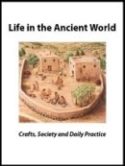
A 4,700-year-old Mesopotamian tavern at the ancient city of Lagash. Courtesy Lagash Archaeology Project.
Modern people are not the only ones who enjoy a nice drink after work or during a night out on the town. Indeed, 5,000 years ago, Sumerians in the ancient city of Lagash in southern Mesopotamia were doing exactly the same thing. While excavating the city, which is located about 200 miles southeast of Baghdad, archaeologists uncovered a public eating space dated to 2700 BCE, around the same time that the legendary Gilgamesh would have ruled in nearby Uruk. The discovery sheds light on not only ancient food culture but also the understudied middle class of Mesopotamian society.

Drinking and Dining in Ancient Lagash
Uncovered only inches below the surface, the Mesopotamian tavern featured a partial kitchen, an oven, an ancient “refrigerator,” and an open-air dining area filled with benches. The excavators also found around 150 serving dishes, some of which contained the remains of fish and animals served at the tavern, and evidence of beer, an important product in ancient Mesopotamia.
While archaeological excavations in Iraq have historically focused on palaces, temples, and other monumental structures, the Lagash tavern represents the daily life of the middle class, which has long been neglected in ancient Mesopotamia studies. According to Holly Pittman, director of the project and Curator of the Penn Museum’s Near East Section, “Probably what we have—and especially in an environment as precarious as southern Mesopotamia—is that you have a broad band of people that we might consider ‘middle class’ during the third millennium. They had agency; they made decisions. They didn’t have wealth necessarily, but they were largely independent and had mobility.”
“The fact that you have a public gathering place where people can sit down and have a pint and have their fish stew, they’re not laboring under the tyranny of kings,” Reed Goodman, an archaeologist at the University of Pennsylvania, told CNN. “Right there, there is already something that is giving us a much more colorful history of the city.”
Lagash was one of the oldest and largest cities in the Sumerian heartland of southern Mesopotamia during the third millennium BCE. Extending across nearly 2 square miles of southern Mesopotamia’s marshland, the city was a major center of trade and production, with fertile agricultural land, plentiful fishing, and many other important resources.
Read more in Bible History Daily:
All-Access members, read more in the BAS Library:
Circular Signatures: Getting a better view of Mesopotamia’s smallest art form
Not a BAS Library or All-Access Member yet? Join today.The post Ancient Mesopotamian Tavern Discovered appeared first on Biblical Archaeology Society.


0 Commentaires